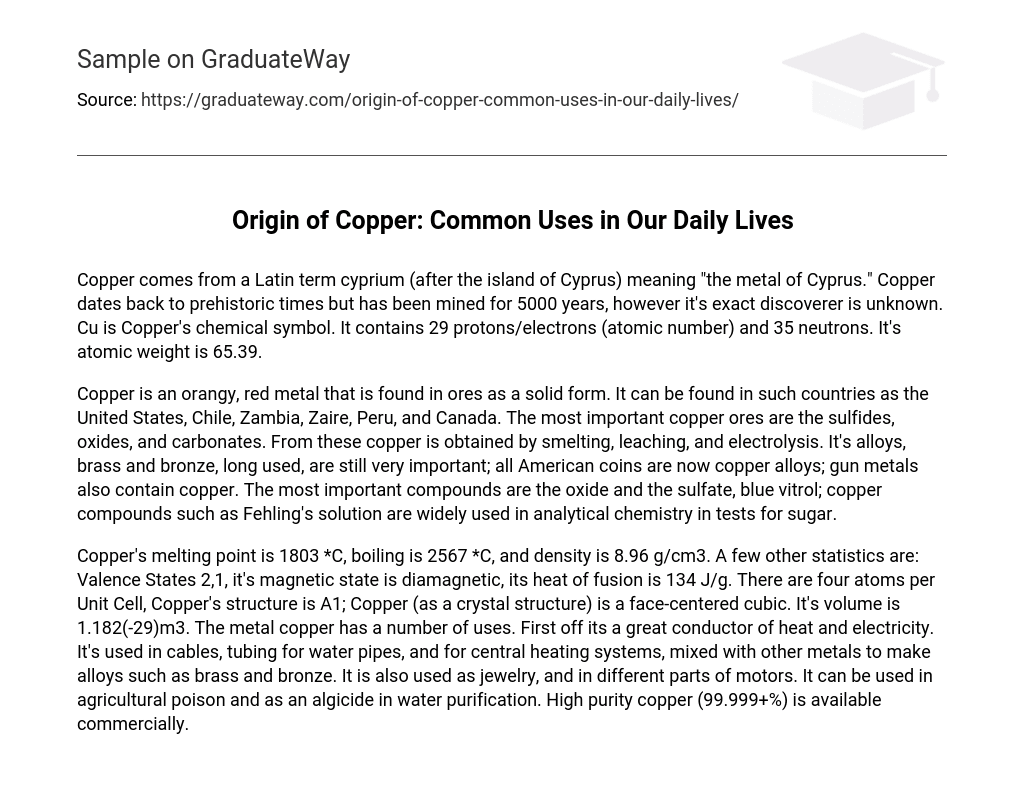Copper comes from a Latin term cyprium (after the island of Cyprus) meaning “the metal of Cyprus.” Copper dates back to prehistoric times but has been mined for 5000 years, however it’s exact discoverer is unknown. Cu is Copper’s chemical symbol. It contains 29 protons/electrons (atomic number) and 35 neutrons. It’s atomic weight is 65.39.
Copper is an orangy, red metal that is found in ores as a solid form. It can be found in such countries as the United States, Chile, Zambia, Zaire, Peru, and Canada. The most important copper ores are the sulfides, oxides, and carbonates. From these copper is obtained by smelting, leaching, and electrolysis. It’s alloys, brass and bronze, long used, are still very important; all American coins are now copper alloys; gun metals also contain copper. The most important compounds are the oxide and the sulfate, blue vitrol; copper compounds such as Fehling’s solution are widely used in analytical chemistry in tests for sugar.
Copper’s melting point is 1803 *C, boiling is 2567 *C, and density is 8.96 g/cm3. A few other statistics are: Valence States 2,1, it’s magnetic state is diamagnetic, its heat of fusion is 134 J/g. There are four atoms per Unit Cell, Copper’s structure is A1; Copper (as a crystal structure) is a face-centered cubic. It’s volume is 1.182(-29)m3. The metal copper has a number of uses. First off its a great conductor of heat and electricity. It’s used in cables, tubing for water pipes, and for central heating systems, mixed with other metals to make alloys such as brass and bronze. It is also used as jewelry, and in different parts of motors. It can be used in agricultural poison and as an algicide in water purification. High purity copper (99.999+%) is available commercially.





